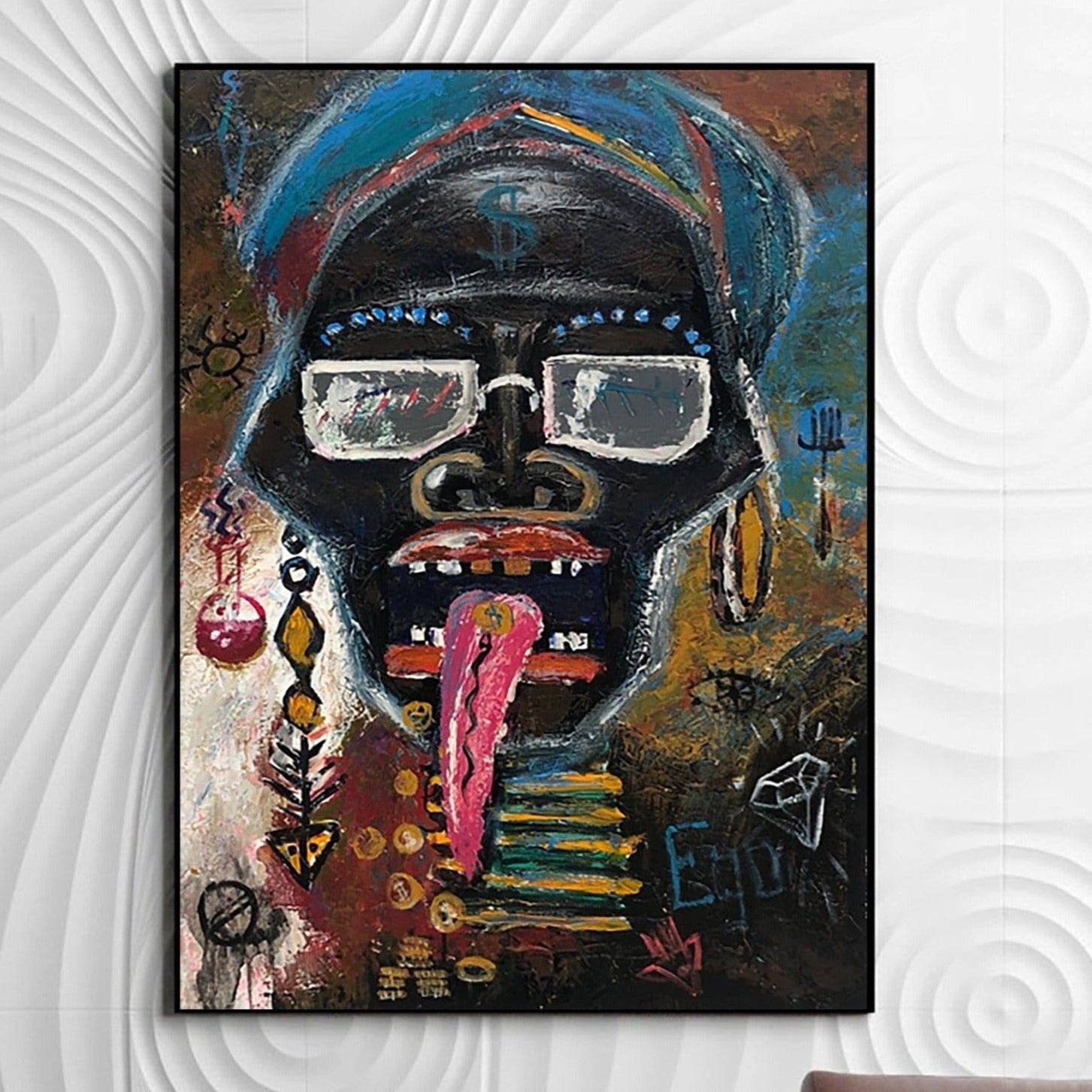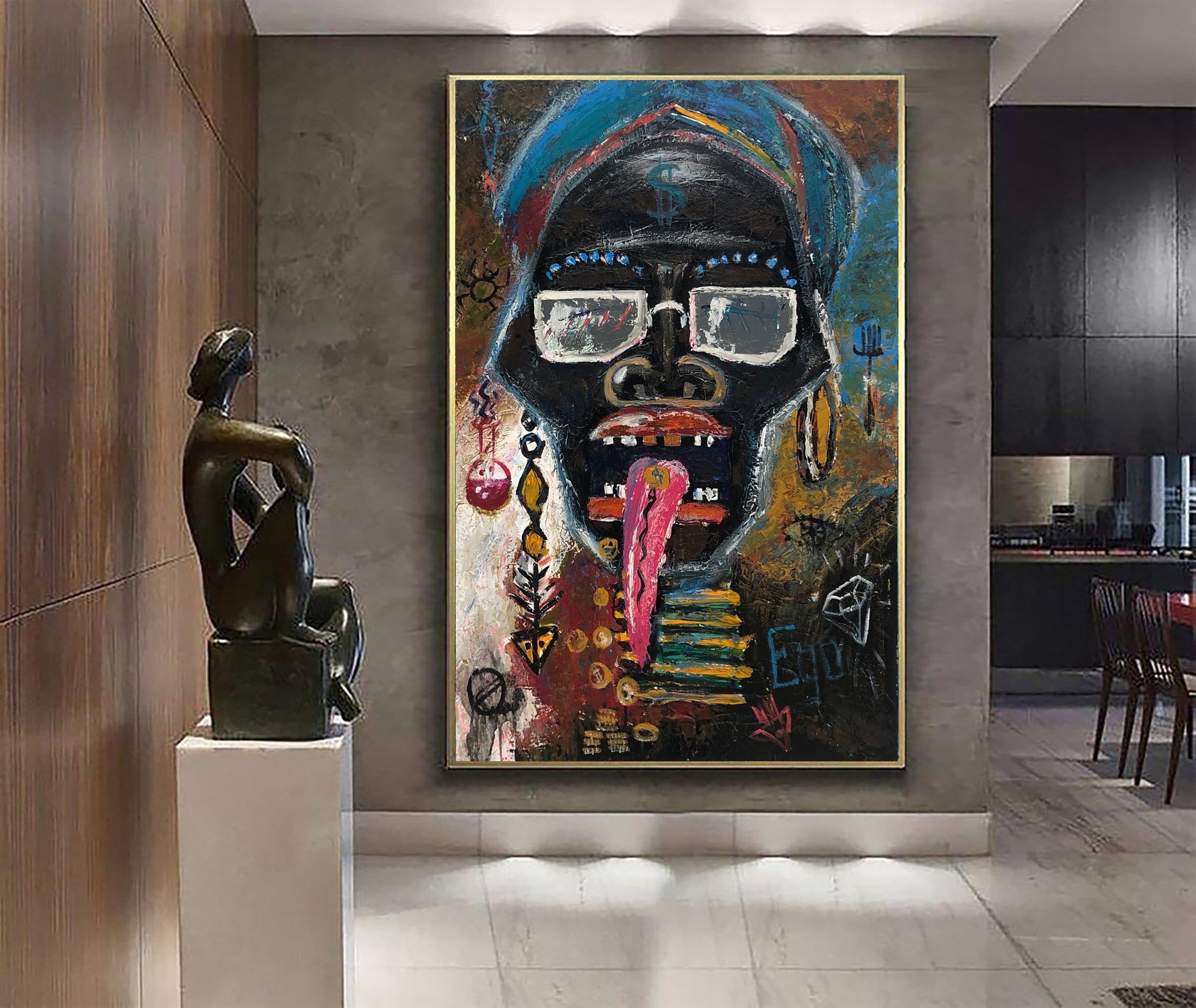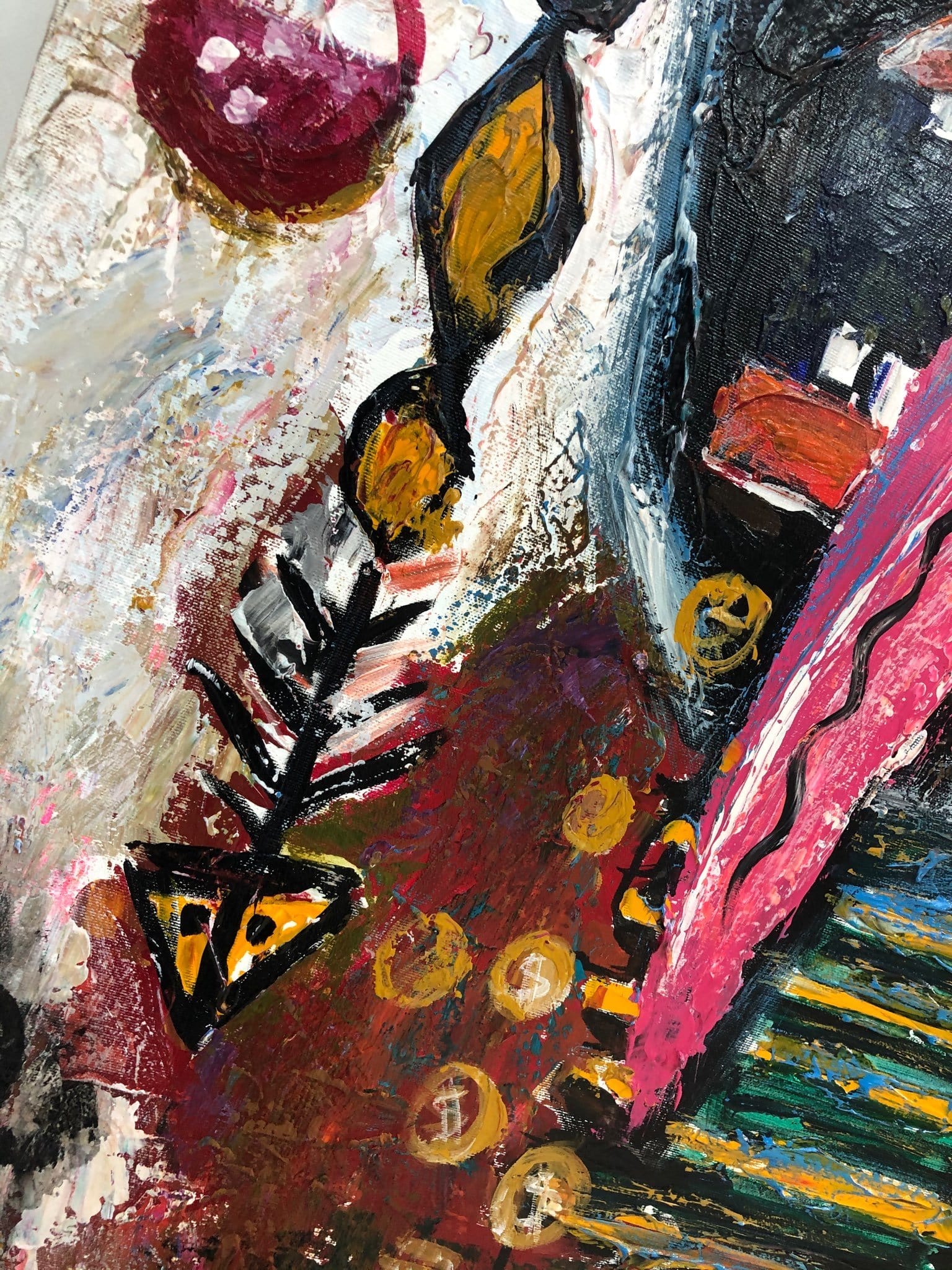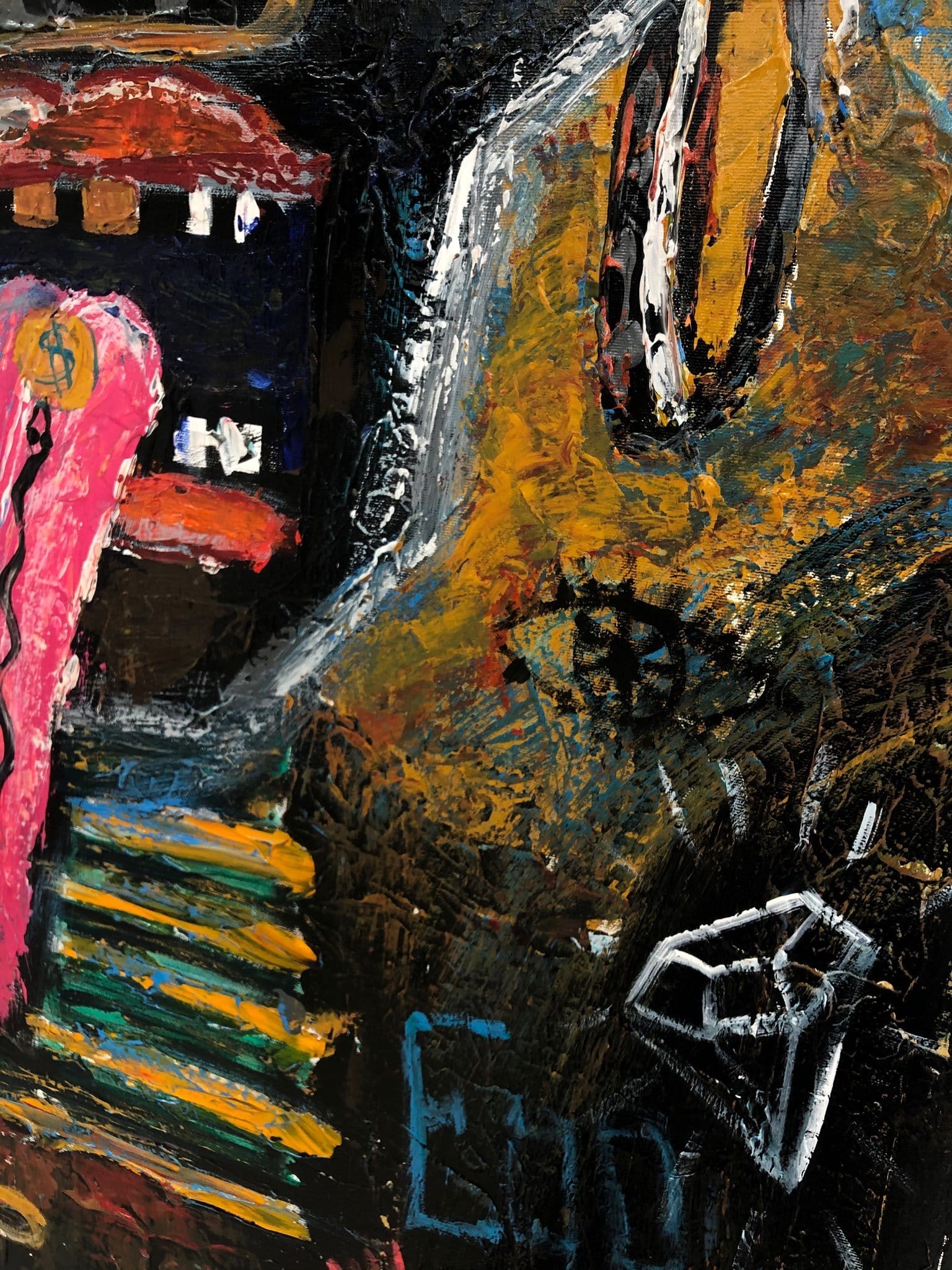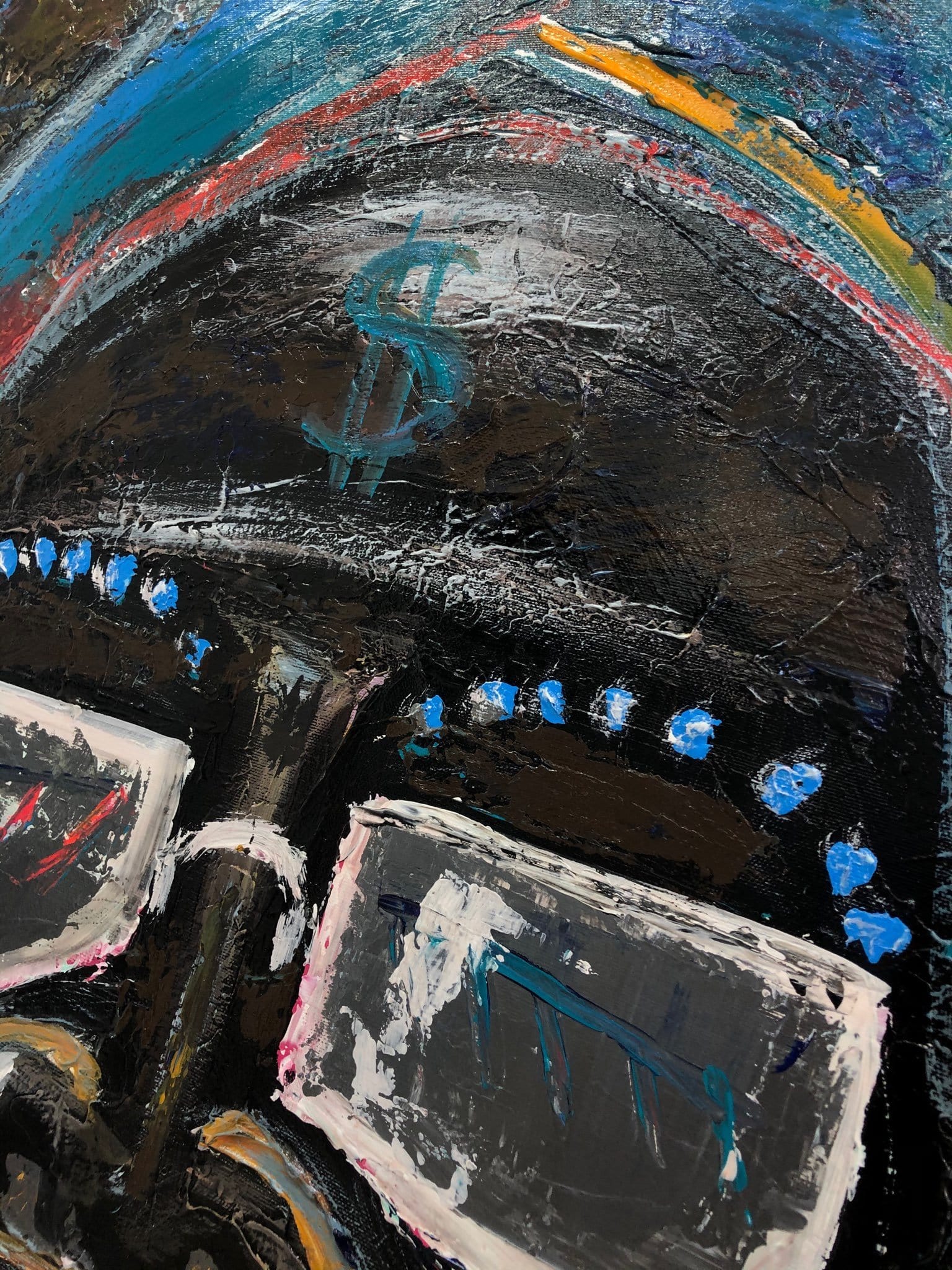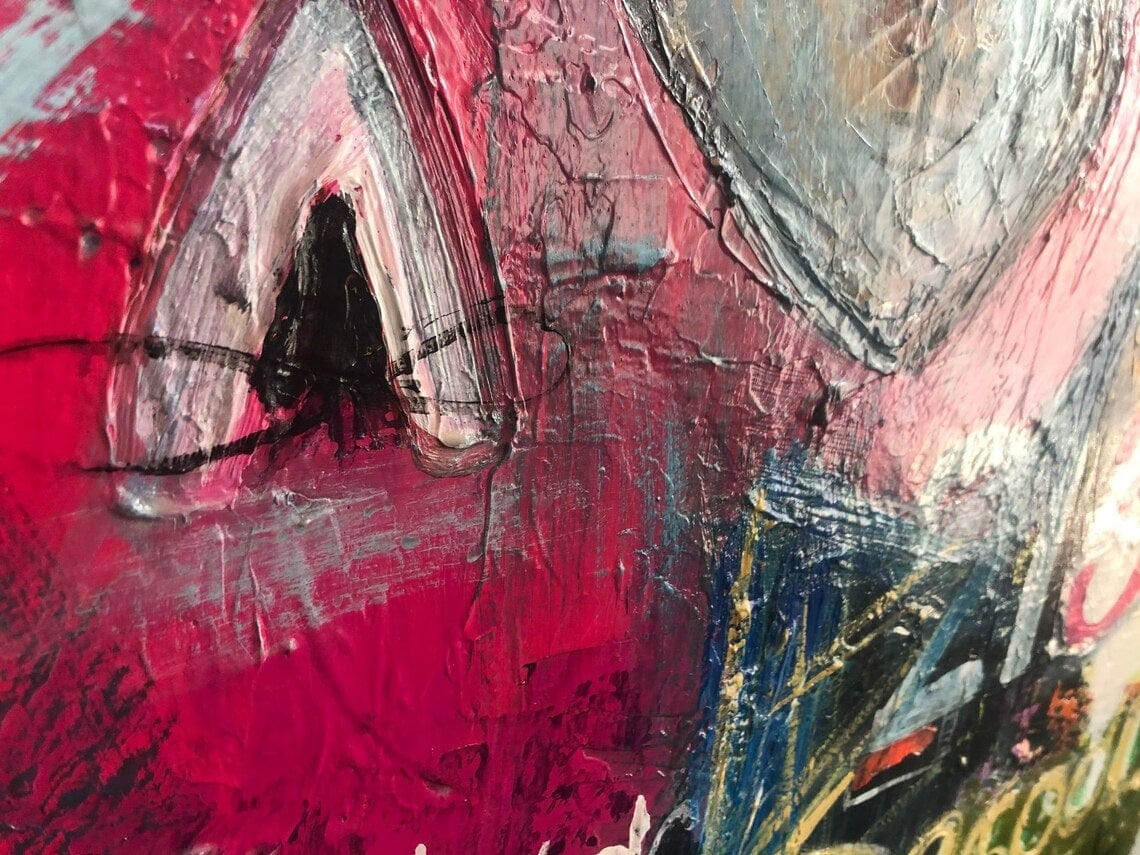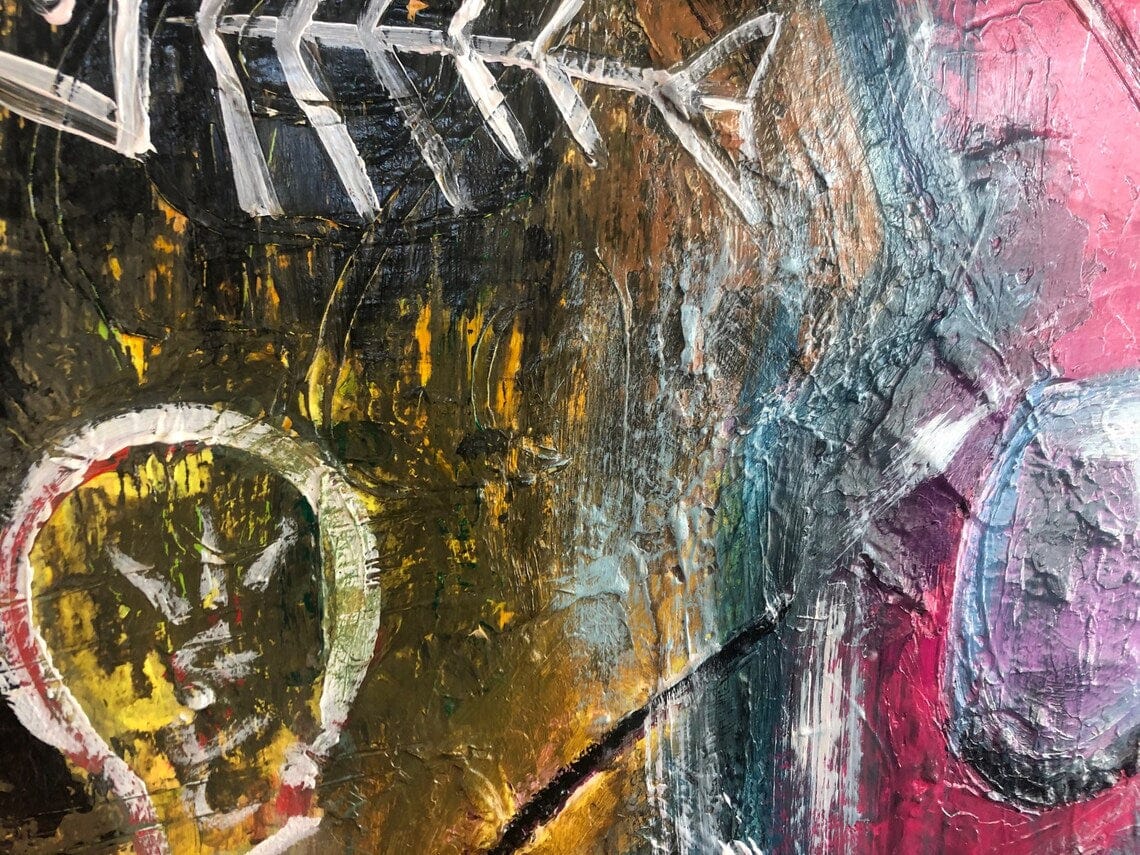The Masterpiece of 1982: Basquiat's Untitled.

Untitled Skull, 1982 by Jean-Michel Basquiat
Untitled, one of Jean-Michel Basquiat's most famous works, was created in 1982—a year often regarded as the zenith of his artistic output. This piece, which depicts a spooky skull in aggressive black brushstrokes with splashes of red, yellow, and white on a brilliant blue background, exemplifies Basquiat's raw intensity and allegorical profundity.
Untitled, which was first purchased by the Annina Nosei Gallery in New York for $4,000, thereafter went through the hands of Phoebe Chason and Alexander F. Milliken. It was bought by collectors Jerry and Emily Spiegel at Christie's in 1984 for $20,900, and it was hidden from view for many years after that. The artwork captures not just Basquiat's individual style but also the social, political, and cultural milieu of the early 1980s, when the artist was exploring race, identity, and power through his own symbols.
Dustheads: Basquiat’s Symbolic Exploration of Psyche and Identity

Dustheads, 1982 by Jean-Michel Basquiat
Dustheads, created in 1982, is a striking example of Jean-Michel Basquiat's distinct style and metaphorical depth. The picture displays two stick-like characters against a dark background, with one figure standing out in brilliant red, its arms flailing over its head and eyes spinning like saucers. The second figure, although less dynamic, has the same mask-like face and spiraling eyes.
This work goes beyond mere depiction, delving into the human psyche and the chaotic effects of altered states, possibly influenced by Basquiat’s observations of drug culture in 1980s New York. The mask-like faces and dynamic composition reflect a disorienting blend of reality and illusion.
Dustheads sold for a remarkable $48.8 million at a 2013 auction to an undisclosed buyer, making it one of the most expensive Basquiat paintings ever sold (at that moment).
Irony of a Negro Policeman: Basquiat’s Critique of Race and Power

Irony of a Negro Policeman, 1981 by Jean-Michel Basquiat
A 1981 painting by Jean-Michel Basquiat, is a harsh satire of American racial dynamics. The piece depicts a black figure with a mask-like visage, its head confined in a cage-shaped headgear, representing African-American control and incarceration inside oppressive structures. The inscription "Irony of Negro Policeman" on the right side and the term "Pawn" at the bottom emphasize Basquiat's belief that African-American police officers, despite their authority, are merely instruments in a system designed to marginalize them.
This artwork, set in early 1980s America during a period of heightened racial tension, addresses the cruel irony of individuals enforcing norms that perpetuate their own community's oppression.
Eli Broad, a well-known art collector, paid $14.6 million for The Irony of a Negro Policeman at an auction in 2012. Irony of a Negro Policeman, with its profound symbolism and societal commentary, exemplifies Basquiat's ability to question and inspire thought via art.
Exploration of Strength and Identity in Boxer

Untitled (Boxer), 1982 by Jean-Michel Basquiat
Boxer, a 1982 artwork by Jean-Michel Basquiat, is a powerful representation of physical might and the complexities of African-American manhood. The painting depicts a giant black boxer with his arms triumphantly lifted, commanding the canvas with raw power and victory. However, Basquiat's use of abstract, geometric shapes, particularly on the boxer's face, lends the figure an almost inhuman look, forcing viewers to wonder whether the boxer's pursuit of physical prowess has come at the expense of his humanity.
Basquiat's neo-expressionist style is characterized by the piece's dynamic lines and colorful energy, as well as the bold white strokes that highlight the boxer's muscles. The cultural and historical background of the early 1980s, when African-American athletes were gaining recognition but still facing enormous societal hurdles, gives another dimension of meaning to the piece. Boxer not only glorifies physical strength, but delves into the conflicts of identity, race, and power in a culture that frequently reduces people to mere symbols.
In May 2008, Boxer was sold at auction for $13.5 million to American entrepreneur and art collector Peter Brant, further cementing its status as a significant work in Basquiat’s oeuvre.
Hollywood Africans as a Commentary on Stereotypes and Identity

Hollywood Africans, 1983 by Jean-Michel Basquiat
Jean-Michel Basquiat's 1983 painting Hollywood Africans is a courageous condemnation of the stereotypes that are placed on African Americans by the entertainment industry. The piece, created during a lengthy vacation to Los Angeles, depicts a trio of characters on the right, depicting Basquiat, rap rapper Rammellzee, and painter Toxic, who had traveled with him from New York. The artwork contains autobiographical notations, including Basquiat's birthdate, as well as historical references such as "Sugar Cane," "Tobacco," "Gangsterism," and "What is Bwana?"— phrases that allude to the limited and sometimes degrading roles granted to black performers in Hollywood's past.
Basquiat's approach of crossing out words or phrases calls attention to them rather than masking them, and he used it to highlight African Americans' exclusion and marginalization. The brilliant colors and rich writing in Hollywood Africans are typical of Basquiat's neo-expressionist technique, which blends personal and cultural history with social commentary.
This artwork was sold at auction in 2018 for $10.8 million to an unknown buyer, emphasizing its importance as both a work of art and a message about the long-lasting impact of racial stereotypes in popular culture.
In Italian: Basquiat’s Playful Exploration of Language and Symbolism

In Italian, 1983 by Jean-Michel Basquiat
A fascinating investigation of language, symbolism, and cultural allusions, Jean-Michel Basquiat's 1983 work In Italian is worth seeing. Intriguingly, the title "In Italian" is a little misleading, despite the fact that this painting contains a variety of symbols that Basquiat regularly used in his works. A degree of intricacy and irony is added to the picture by Basquiat purposefully replacing the lone Italian word in the composition, "Sangue," which means blood, with the Spanish term "Sangre."
Basquiat's decision to replace the Italian word with its Latin equivalent illustrates his fascination with linguistic flexibility and cross-cultural links. This play with words and symbols is typical of Basquiat's technique, in which he frequently blended languages and cultural references to test viewers' perceptions and expectations.
The painting was sold for $10.5 million to an unknown buyer at a Sotheby's auction in 2017, highlighting its significance as a work that exemplifies Basquiat's intellectual approach to art and his ability to imbue seemingly simple decisions with significant meaning.
Basquiat’s Win $1,000,000 and Its Bold Commentary on Wealth and Society

Win $ 1’000’000, 1984 by Jean-Michel Basquiat
A remarkable example of Jean-Michel Basquiat's neo-expressionist style, Win $1,000,000 from 1984 is an artwork that features layered lettering, vivid colors, and powerful lines. The painting is a disorganized mosaic of words, symbols, and abstract shapes that expresses Basquiat's observations on the meaninglessness and appeal of money in a capitalist world. The well-known text "Win $1,000,000" is a critique of the consumerism that dominated the 1980s and conjures up the alluring promise of immediate wealth.
In this work, Basquiat also alludes to the deluge of contradictory and frequently confusing messages that people are subjected to in a consumer-driven society through the use of repeating symbols and broken words. The disorderly chase of fortune and the pressures from society that accompany it are reflected in the painting's disorganized composition. Win $1,000,000 effectively conveys the conflict between hope and disappointment, issues that are relevant to the larger historical and cultural background of the time.
The fact that this painting brought about $13.1 million at a Christie's auction in 2015 highlights both its importance and Basquiat's continuing influence on modern art.
Dos Cabezas and the Beginning of a Legendary Artistic Partnership

Dos Cabezas, 1982 by Jean-Michel Basquiat
Dos Cabezas, or "Two Heads" in Spanish, is a well-known work by Jean-Michel Basquiat from 1982 that perfectly captures the essence of his relationship with pop art icon Andy Warhol. Painted on canvas and mounted on wooden slats, this acrylic and oil stick piece marks the beginning of the great collaboration between Warhol and Basquiat.
Love and admiration drove the impromptu birth of Dos Cabezas. The still-emerging artist Basquiat hurried home on October 4, 1982, motivated by his encounter with Warhol, following a lunch meeting set up by art collector Bruno Bischofberger in the gallery. He finished the painting in two hours and sent Warhol the wet canvas as a gift, demonstrating the close relationship and regard that the two artists had for one another. Along with honoring their meeting, this piece of art marks the beginning of a strong and significant cooperation in the world of art.
Dos Cabezas brought in $7.1 million at auction in 2017, a price that acknowledged both its historical value as a work of art and its significance in the legendary collaboration between Basquiat and Warhol.
Riding with Death and the Lasting Impact of Basquiat’s Final Work

Riding With Death, 1988 (his last work) by Jean-Michel Basquiat
Just before his untimely death in 1988, Jean-Michel Basquiat completed Riding with Death, one of his powerful and final works. An African-American figure rides a white skeleton against a textured beige background in this artwork, which is noticeably more somber than his usual bright and wild works. The painting, which explores issues of race, mortality, and the human condition, is simple in appearance yet rich in symbolism. Perhaps echoing Basquiat's own struggles and reflections in his dying days, the striking contrast between the pale skeleton and the dark body suggests a dramatic remark on life and death.
The fact that Riding with Death brought $5.2 million at auction indicates how important the piece is to Basquiat's body of work. In addition to ending a fruitful and significant career, Basquiat's death at the age of 27 solidified his reputation as a visionary artist whose work has a lasting impact. In light of Basquiat's passing, the themes of mortality and existential contemplation in Riding with Death have only become more significant, making it a potent representation of his ongoing influence on the art world.
















